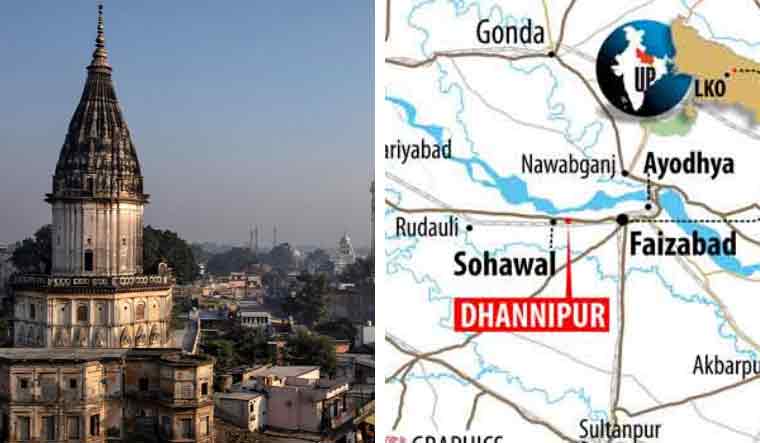Iqbal Ansari, son of Hashim Ansari, the original litigant of the Ayodhya title suit has said the land allotted for the mosque in Ayodhya by the state government is a "clear violation of the Supreme Court order".
On Wednesday, the Uttar Pradesh government announced the allotment of a five-acre piece of land in Dhannipur village in the Raunahi area of the Faizabad Lucknow highway—some 20 kilometres away from the disputed site. This allotted site exists outside the sacred 14-kosi area of the birthplace, and is too far off.
“A masjid already exists in the Kotia mohalla area of Ayodhya. It is small and can accommodate 200 namazis (those who offer the namaz) at present. Ideally, we should have been given land around the existing mosque. We would have expanded it to hold 500 namazis at a time”, Ansari told THE WEEK.
The government’s logic behind the allotment of the land included its proximity to the Raunahi police station so that any unrest could be quelled at once. Ansari, however, questions this premise. “The Hindus and Muslims of Ayodhya have always existed in peaceful coexistence. By creating such a distance between the temple and the mosque, the government has questioned the spirit of brotherhood between the communities”, he said.
On November 9 last year, a five-judge bench of the Supreme Court of India had ordered that the entire disputed land of area of 2.77 acres should be allocated for the construction of a temple, while an "alternative piece of land of area of 5 acres be allocated to the Sunni Waqf Board for the construction of a mosque at a suitable place within Ayodhya". In 2010, the Allahabad High Court had judged that the disputed land be divided into three parts.
also read
- Controversy over Ram Mandir tableau for India Day parade in New York explained: 'Target of hate crime'
- Like Ayodhya, INDIA bloc will defeat Modi, BJP in Gujarat: Rahul Gandhi
- Ayodhya Ram Path waterlogging: UP govt suspends 6 officials, undertakes repair works
- Ayodhya Pran Pratishtha: 15 Indian sporting icons invited for Ram Temple consecration on Jan 22
In November 2018, the UP government had changed the name of Faizabad to Ayodhya. Thus, technically, Raunahi which fell in Faizabad, came under Ayodhya.
Zafaryab Jilani, convenor of the Babri Masjid Action Committee said, “Merely renaming Faizabad as Ayodhya does not make it Ayodhya. The land is not at a prominent place in Ayodhya.”
Ansari told THE WEEK, "Never did we demand that a grand mosque was to be built. Our original plan was always to have a school, hospital and dharamshala at the site. A mosque for 500 people does not need more than 500 metres of land. We don’t want an exhibition piece that is visible from 10 kilometres away."
The land by the UP government has been granted to the Sunni Waqf Board. The Board chairman, Zufar Ahmad Faruqi, was not available for comment, despite several attempts made by THE WEEK to contact him.
Ansari is clear that whatever decision the Sunni Waqf Board takes on accepting the land, the other litigants will petition the state government to offer a site which conforms to the Supreme Court judgment. “We are clear that we do not want to get involved in any further litigation, but we will pursue our case for land within Ayodhya with the state government,” he said.



